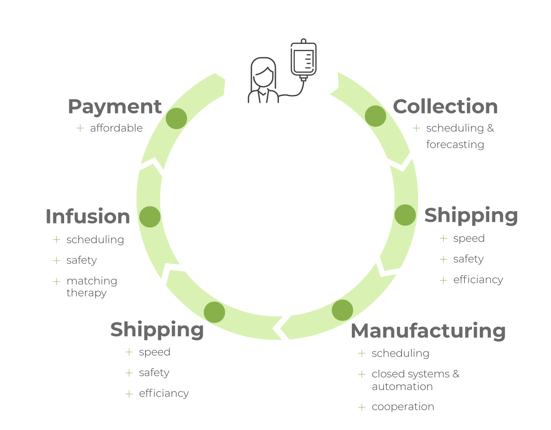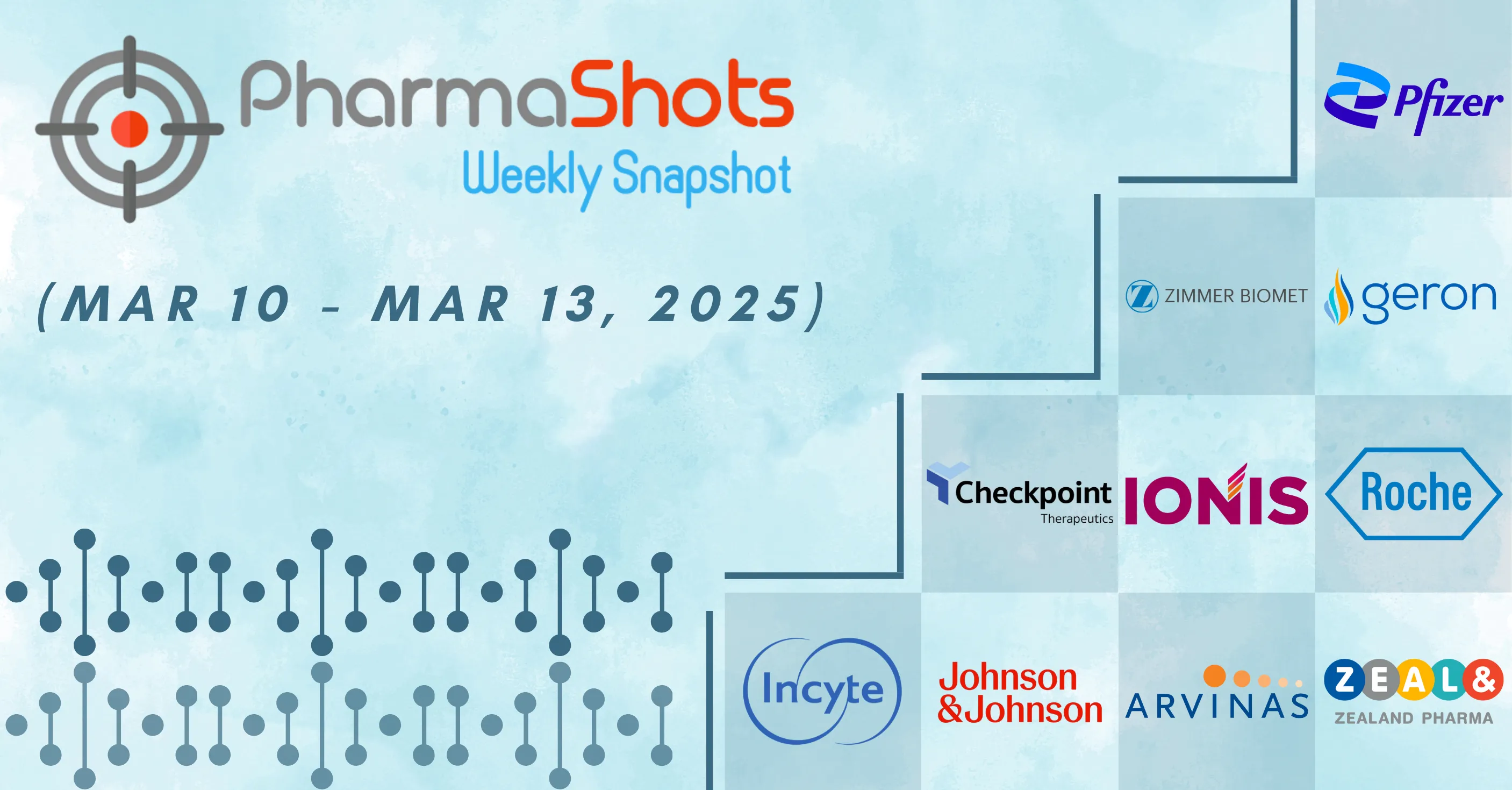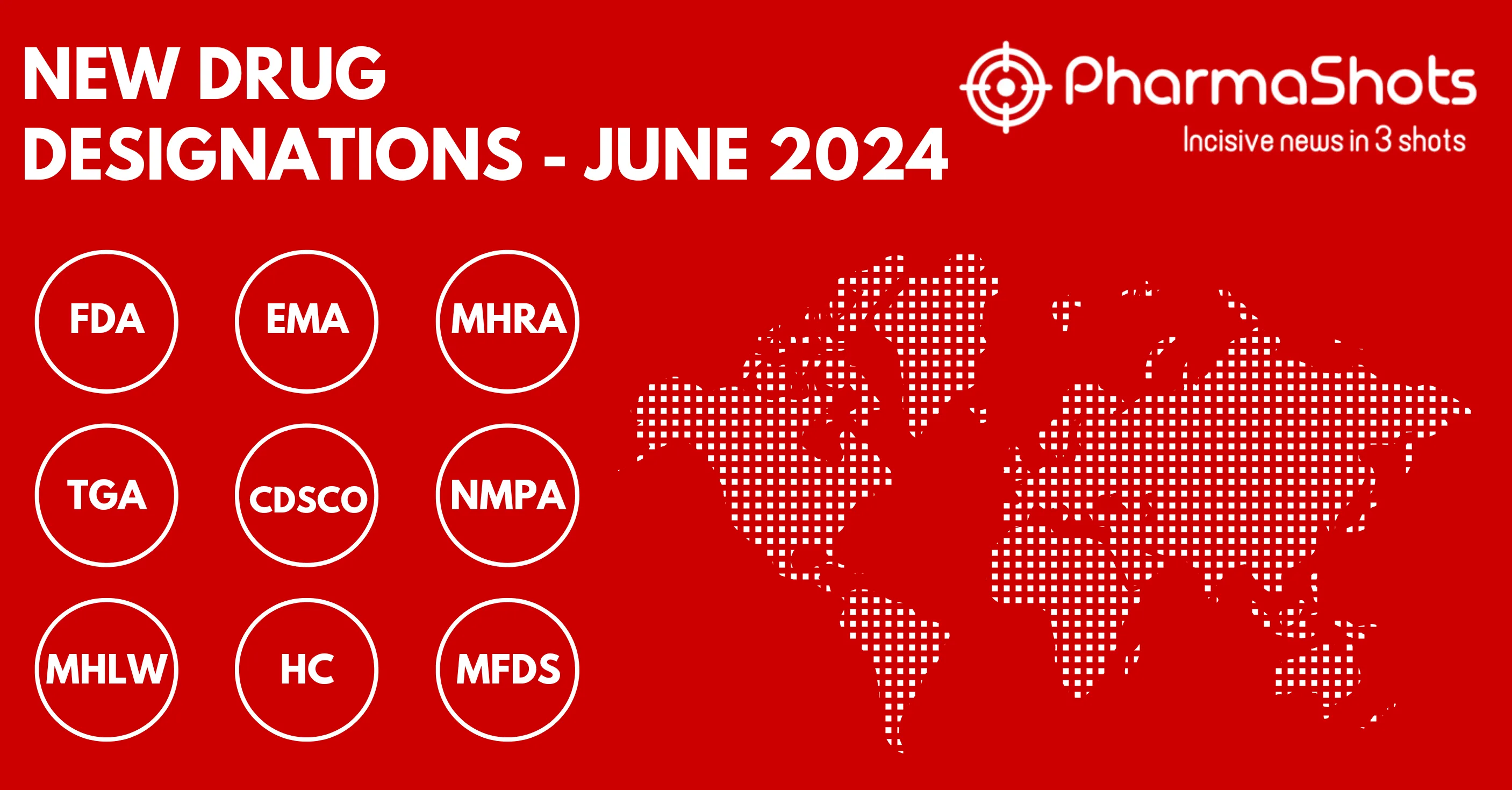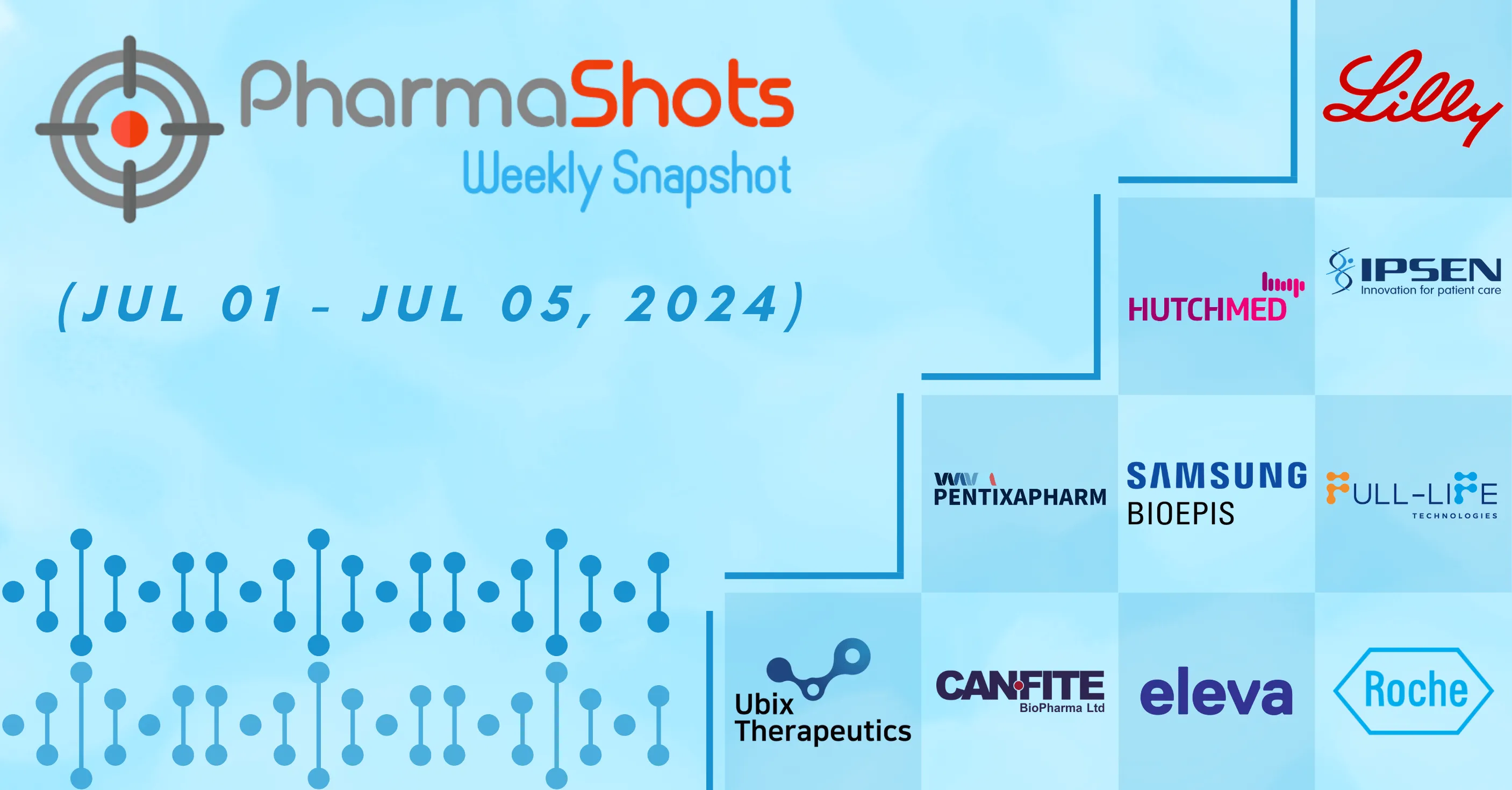
How Pharma 4.0 Influences Cell and Gene Therapy
Pharma 4.0 foresees a manufacturing environment that is mostly automated and barely depends on human labor. Production systems would be interconnected with each other, as well as with supply chain management systems and quality assessment systems, all orchestrated by machine-learning-driven AI control systems. As such, smart factories promise higher productivity, better quality, and enhanced agility.
Cell and gene therapies (CGT) are prime examples of innovative products that will benefit greatly from the implementation of Pharma 4.0 principles. Companies struggling with the scale-up of highly promising personalized CGT products are mostly facing challenges pertaining to the logistics and supply chains, not the underlying science, which is a paradigm breaker in the biopharma field.
 Customized & individualized small-scale production
Customized & individualized small-scale production
Until recently, the predominant system of the pharmaceutical industry was the big batch product intended for use in large patient populations (e.g. an antibiotic for infections). With the rise of modern molecular biology technologies, more niche diseases with smaller patient populations became accessible to innovative therapeutic entities (“orphan drugs”).
The current peak of this development is the production of personalized therapeutics in the form of cell and gene therapies (CGT): one unique, customized dose for each patient.
Over the next years, the pharma sector needs to come up with solutions to scale the production of customized, individualized small-batch therapeutics. The adoption of modern information technological concepts of Pharma 4.0, to increase the productivity of production units, enhance adaptability to switch between distinct small batches, and operate proactively conforming to market needs is auspicious.
- Smart Packaging and technologies
Patient-centric therapeutics challenge traditional supply chains because the patient’s own cells are required among production. For example, when treating tumors with CAR-T cells, the patient’s own T cells are among the raw materials and the drug product is exclusively working for this unique person. Therefore, there is no use of a huge inventory of such life-saving therapeutics. Hence, the focus must be on the establishment and optimization of novel supply chains, leveraging state-of-the-art data collection and data analysis.

One key tool to overcome this challenge is the use of smart packaging technologies. Smart packaging allows the real-time monitoring of crucial data during the transportation and manufacturing of CGTs. This helps to orchestrate all stakeholders during time-sensitive steps, e.g. delivery of cryo-transported CAR-T cells to adequately trained medical personnel to ensure proper handling of pharmaceutical products and substances.
Moreover, this technology allows keeping track of transportation progress and cryo-conditions in such a way that timely intervention is possible. Single Use Support is a pioneer in smart packaging in the field of CAR T-cell therapy. Innovative shells protect liquids during freezing, transport, and storage and are connected for temperature regulation.
In order to enable real-time remote monitoring of communication and essential parameters, products are equipped with RFID tags (RFID stands for radio frequency identification). Those are tags that facilitate full lifecycle tracking and data analytics, which play a crucial role in the optimization of workflows.

- Cell and gene therapy: looking into a brighter future
Cell and gene therapies are already an important part of several therapies and are becoming a stable part of the market. They are delivering on their promises and in doing so, knock over the current paradigm in manufacture and distribution.
Additionally, the scale-up of different vaccine production highlights further weak spots, bottlenecks, and a general lack of preparedness.
The solution lies in growing strong partnerships between established big players in the pharma sector and innovator organizations that supply them with novel methodologies, change the culture, and innovative components to facilitate the adoption of Pharma 4.0.
References:
- S.A. Ezell, “Policymaker's Guide to Smart Manufacturing”, Information Technology & Innovation Foundation (2016)
- N.S. Arden et al., Int. J. Pharm., 2021, Vol 602, pp. 120554; doi:10.1016/j.ijpharm.2021.120554.
- D. Schaefer, W. M. Cheung, “Smart Packaging: Opportunities and Challenges”, Procedia CIRP, Vol. 72, 2018, pp. 1022; doi:10.1016/j.procir.2018.03.240
Source:susupport
About Author:


Michael Eder is no newcomer to the health care industry. Before entering his professional path, Eder studied Non-profit, Social, and Health Management at the Management Center Innsbruck as well as International Healthcare Management and gained impressive experience by working in different positions such as account manager and health communication consultant in well-known health care and health communication companies. Since January 2020, he has established himself as an essential member of the Single Use Support team as a marketing manager and in business development.
Related Post: ViewPoints Article: The Ultimate Guide To COVID-19 Vaccines: Before, During, And After Vaccination

This content piece was prepared by our former Senior Editor. She had expertise in life science research and was an avid reader. For any query reach out to us at connect@pharmashots.com














